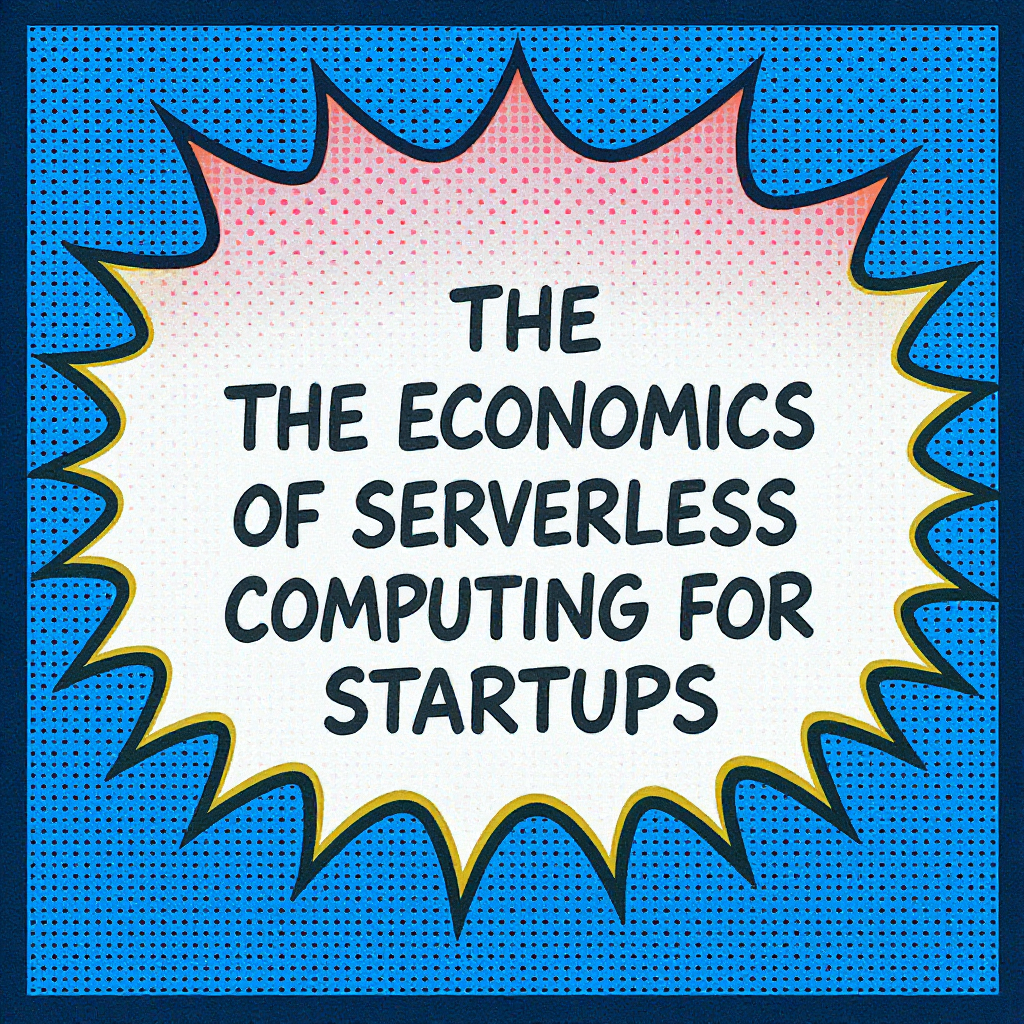Startups face a unique set of economic challenges, particularly when it comes to infrastructure. Balancing rapid growth with careful resource management is crucial for survival. Serverless computing, with its pay-per-use model, offers a compelling alternative to traditional server infrastructure. This article explores the economic advantages and disadvantages of adopting a serverless architecture for startups, examining cost optimization, scalability, operational efficiency, and potential hidden costs. We will delve into how serverless can contribute to a leaner, more agile, and ultimately, more financially successful startup journey. We will also consider when serverless might not be the best choice, ensuring a balanced perspective on this increasingly popular technology.
Cost Optimization: Embracing the Pay-Per-Use Model
The core economic appeal of serverless computing lies in its pay-per-use pricing model. Unlike traditional servers, where you pay for resources whether they’re used or not, serverless functions only incur costs when they’re actively executing code. This eliminates the expense of idle servers, a significant cost saver for startups with fluctuating workloads. This model is particularly beneficial during the initial phases of a startup where demand is unpredictable. As your application grows, you only pay for the increased compute power, ensuring scalability without significant upfront investment.
Scalability and Elasticity: Adapting to Growth Spikes
Startups often experience unpredictable growth spurts. Serverless architectures are inherently scalable. The cloud provider automatically allocates the necessary resources to handle increased demand, ensuring your application remains responsive even during peak traffic. This eliminates the need for manual scaling, a time-consuming and potentially error-prone process. The automatic scaling feature of serverless functions translates into cost savings by avoiding over-provisioning of resources during periods of low demand.
Operational Efficiency: Streamlining Development and Deployment
Serverless computing significantly reduces operational overhead. Developers can focus on writing code rather than managing servers. The cloud provider handles infrastructure management, including updates, security patching, and capacity planning. This frees up valuable developer time, allowing them to concentrate on building and improving the core product. This translates into faster development cycles and quicker time to market, which are critical advantages for startups in competitive environments.
Hidden Costs and Potential Challenges
While serverless offers significant economic advantages, startups should be aware of potential hidden costs. These include data transfer costs, invocation fees, and potential increases in the cost of managing complex application logic spread across numerous functions. Careful planning and architectural design are essential to mitigate these costs. Furthermore, debugging and monitoring serverless applications can require specialized tools and expertise, potentially adding to operational expenses. The cold start problem, where the first invocation of a function takes longer, can impact performance, requiring careful consideration of function optimization.
| Factor | Traditional Servers | Serverless |
|---|---|---|
| Cost Model | Fixed, upfront costs; pay for resources regardless of usage | Pay-per-use; only pay for consumed resources |
| Scalability | Manual scaling; potentially expensive and time-consuming | Automatic scaling; adapts to demand dynamically |
| Operational Overhead | High; requires dedicated infrastructure management | Low; managed by the cloud provider |
| Development Speed | Slower; infrastructure management takes developer time | Faster; developers focus on code |
In conclusion, serverless computing presents a compelling economic model for startups. The pay-per-use pricing, inherent scalability, and reduced operational overhead offer significant advantages in terms of cost optimization and efficiency. However, startups must carefully consider potential hidden costs, such as data transfer fees and the complexity of managing a distributed application. By carefully weighing the benefits and challenges, and by employing sound architectural practices, startups can leverage serverless computing to achieve significant economic gains and accelerate their growth trajectory. A thoughtful analysis of your specific application needs and projected growth patterns is key to determining if serverless computing is the right choice for your startup.
References
Google Cloud Functions Pricing
Image By: Black Forest Labs






